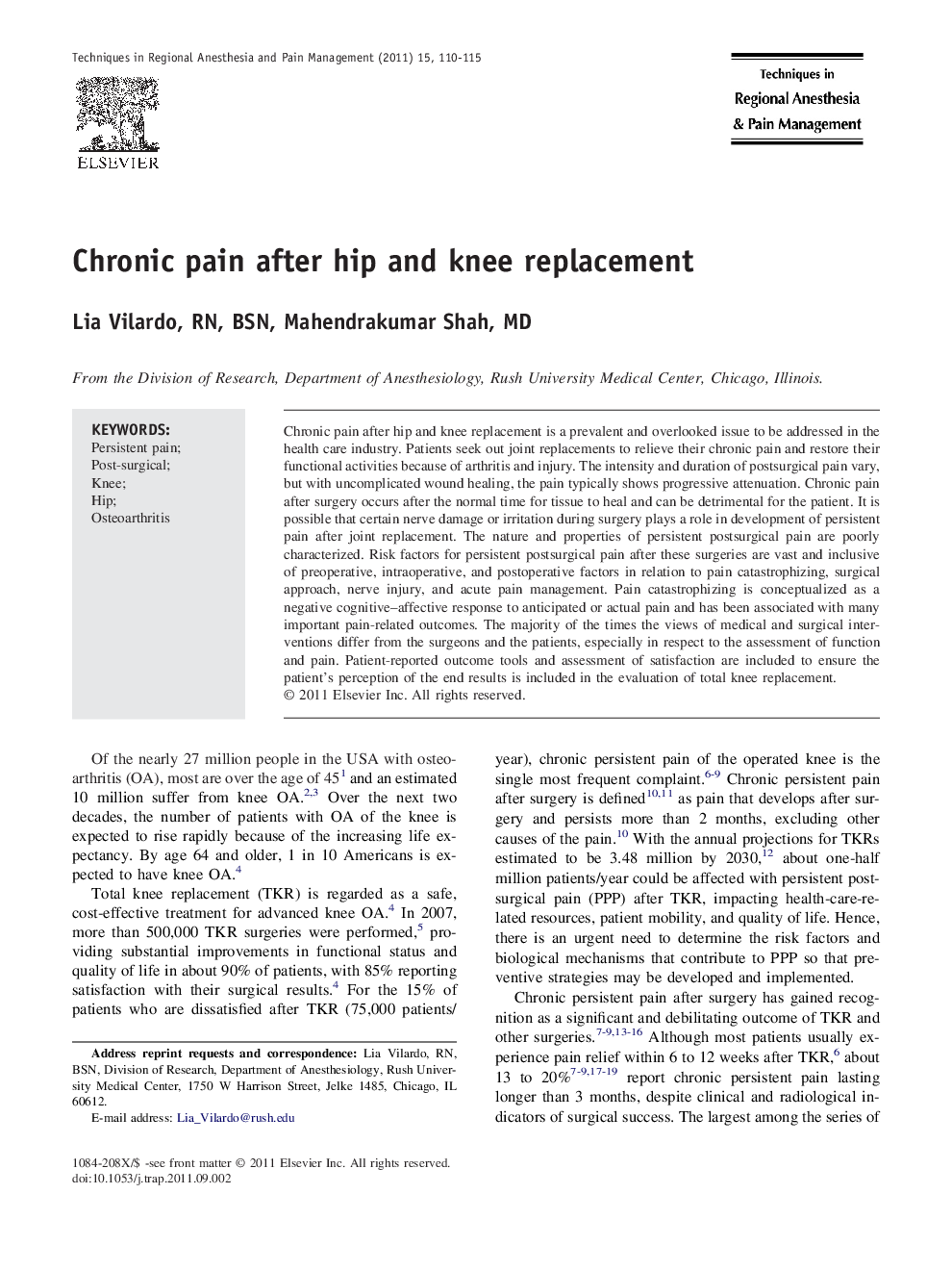| Article ID | Journal | Published Year | Pages | File Type |
|---|---|---|---|---|
| 2772232 | Techniques in Regional Anesthesia and Pain Management | 2011 | 6 Pages |
Chronic pain after hip and knee replacement is a prevalent and overlooked issue to be addressed in the health care industry. Patients seek out joint replacements to relieve their chronic pain and restore their functional activities because of arthritis and injury. The intensity and duration of postsurgical pain vary, but with uncomplicated wound healing, the pain typically shows progressive attenuation. Chronic pain after surgery occurs after the normal time for tissue to heal and can be detrimental for the patient. It is possible that certain nerve damage or irritation during surgery plays a role in development of persistent pain after joint replacement. The nature and properties of persistent postsurgical pain are poorly characterized. Risk factors for persistent postsurgical pain after these surgeries are vast and inclusive of preoperative, intraoperative, and postoperative factors in relation to pain catastrophizing, surgical approach, nerve injury, and acute pain management. Pain catastrophizing is conceptualized as a negative cognitive–affective response to anticipated or actual pain and has been associated with many important pain-related outcomes. The majority of the times the views of medical and surgical interventions differ from the surgeons and the patients, especially in respect to the assessment of function and pain. Patient-reported outcome tools and assessment of satisfaction are included to ensure the patient's perception of the end results is included in the evaluation of total knee replacement.
